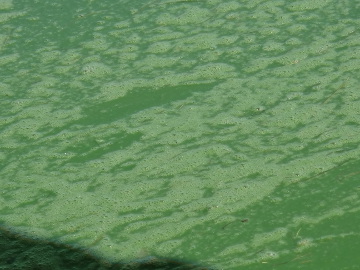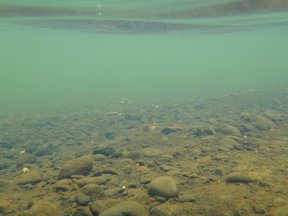Wastewater lagoons will have high pH when algal growth is maximizing, this is due to the release of oxygen and hydroxide alkalinity when the algae consumes CO2 during photosynthesis. Every now and then pH can skyrocket when algal activity seems minimal. This is most likely due to the presence of a planktonic algae, which acts like full grown aquatic weeds at microscopic levels.
Planktonic Algae Increases Lagoon pH
High lagoon pH is most likely due to single-cell planktonic algae. This type of algae is common in wastewater lagoons as it is driven by high nutrients and sludge buildup. There are thousands of different species of planktonic algae, but Aquafix typically comes across two types. First is an algae that turns the water a pea soup-like color and this typically spikes the pH to the mid 8’s.
Second is a type that turns the water color to only a faint green, but spikes the pH to a high 10 or more. This can give operatorss headaches as the water will have a high pH, but the visibility, a gallon sample, and effluent will look relatively clear. Thus giving the impression that an algal presence is non-existent, although that is not the case. It takes 5 gallons to collect 1 ml of this planktonic algae to identify, but the plant will produce an immense amount of hydroxide alkalinity and skyrocket the lagoon pH.
Best Control Methods
Aquafix has a lot of experience with testing for algae and finding its weaknesses. For this particular type, we use a chelated copper like Argos with our adjvant PondZilla Pro, which increases penetration and helps speed up degradation of dead organics. After we always recommend continuing a sludge reduction program to further clarify the water.


